Hydropower has been used since ancient times to grind flour, pump water and irrigate fields and perform other tasks. With the discovery of electricity and electrical generators, by the late 19th century, hydraulics began to be utilized to produce electrical power which in turn started accomplishing even greater range of tasks. The world’s first hydroelectric power scheme was developed in 1878 at Cragside in Northumberland, England by William George Armstrong. It was used to power a single arc lamp in his art gallery. Soon after, the first power station came up in the Niagara Falls producing electricity in 1881.
Today, hydropower is the most widely used form of renewable energy, but still accounts for only 16 percent of global electricity generation. Lack of accessible water sources is one of the main reasons why hydropower is lagging behind alternatives such as fossil fuels and nuclear power. But this is expected to change in the next few decades as several major hydroelectric projects are underway mostly in the Asia-Pacific region, that already generates 32 percent of global hydropower. China is the largest hydroelectricity producer, with 721 terawatt-hours of production in 2010, representing around 17 percent of domestic electricity use. Paraguay produces 100% of its electricity from hydroelectric dams, and Norway 98–99%. Brazil, Canada, New Zealand, Austria, Switzerland, and Venezuela – all have a majority of the internal electric energy production from hydroelectric power.

Let us take a look at some of the most biggest hydroelectric power plants in operation.
Three Gorges Dam, China
The Three Gorges Dam that spans the Yangtze River in Hubei province, China, is the world's largest power station in terms of installed capacity (22,500 MW). Made of concrete and steel, the dam is 2,335 meters long and 181 meters tall. More than 102.6 million cubic meters of earth was moved to make way for 27.2 million cubic meters of concrete and 463,000 tonnes of steel, enough to build 63 Eiffel Towers. It cost the state US$ 22.5 billion to build the dam.
When the water level is at its maximum of 175 meters above sea level, which is 110 meters higher than the river level downstream, the dam reservoir is on average about 660 kilometers in length and 1.12 kilometers in width, giving it an effective capacity of 39.3 km3 and 1,045 square kilometers of surface area.
The Chinese government takes huge pride in the project, in its state-of-the-art large turbines, and its move toward limiting greenhouse gas emissions, even though it displaced some 1.3 million people, causing significant ecological changes as well as controversy both domestically and abroad.

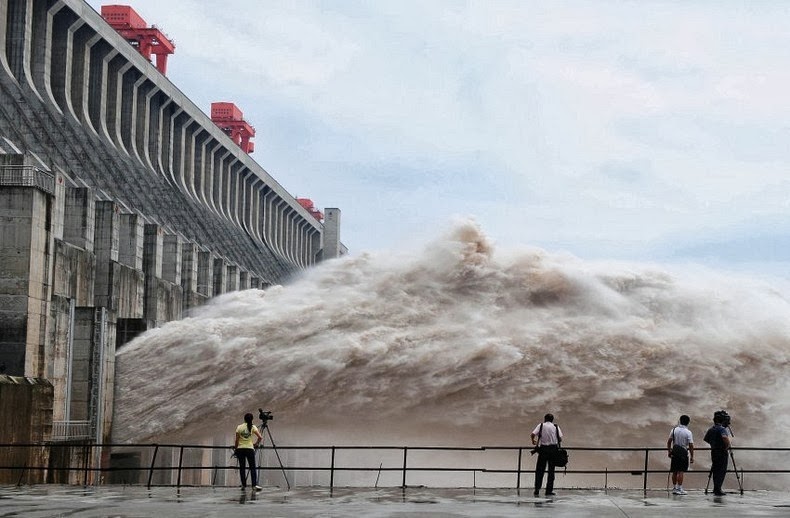
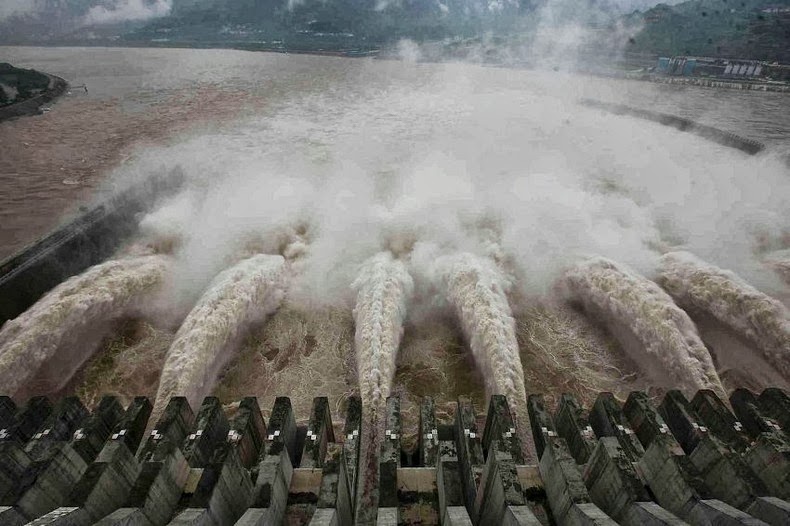
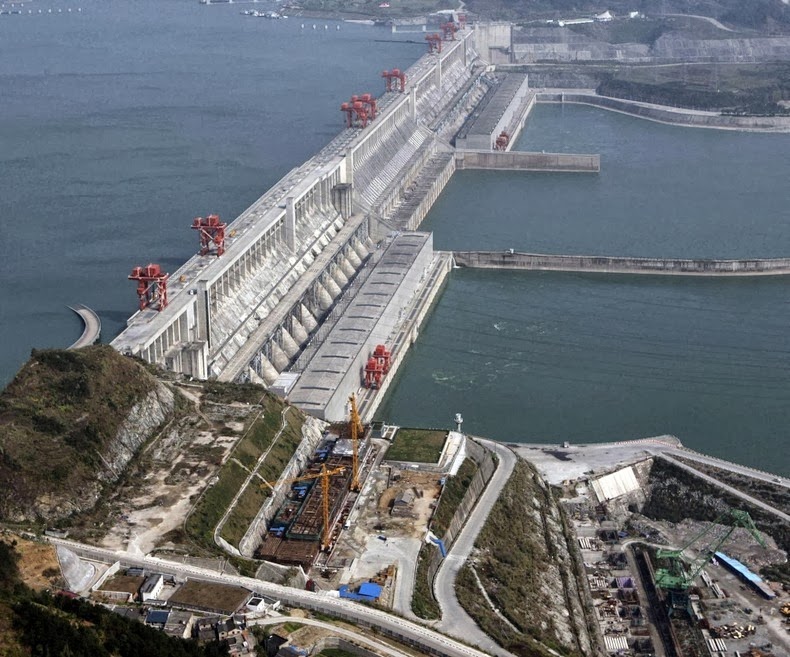
Itaipu Dam, Brazil and Paraguay
The Itaipu Dam is located on the Paraná River on the border between Brazil and Paraguay. Although the dam has a capacity of 14,000 MW, lower than that of the Three Gorges Dam, it has a higher annual yield generating an average of 91 ~ 95 TWh in comparison to 80 TWh by the latter. The plant supplies 90% of the electricity consumed by Paraguay and 19% of that consumed by Brazil.
The Itaipu Dam is actually four dams joined together — from the far left, an earth fill dam, a rock fill dam, a concrete buttress main dam, and a concrete wing dam to the right, giving it a total length of 7235 meters. To build this massive structure, the course of the seventh biggest river in the world had to be altered, and 50 million tons of earth and rock had to moved. To give you an idea, the amount of concrete used to build the Itaipu Power Plant would be enough to build 210 football stadiums; the iron and steel used would allow for the construction of 380 Eiffel Towers and the volume of excavation of earth and rock in Itaipu is 8.5 times greater than that of the Channel Tunnel.
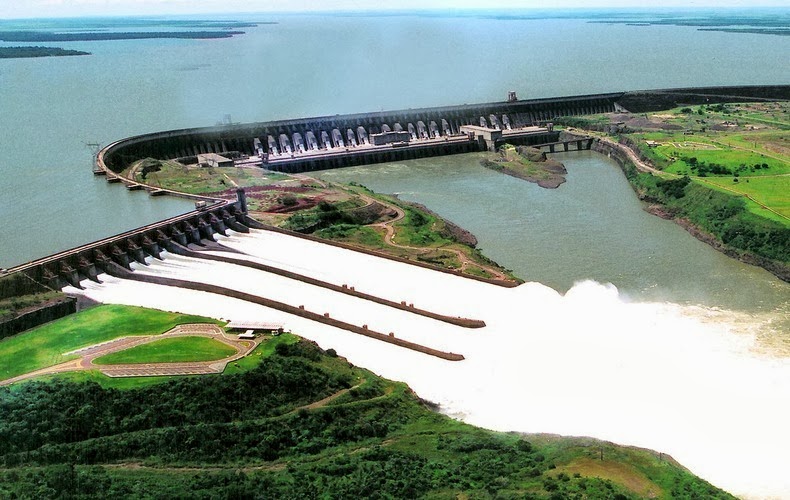
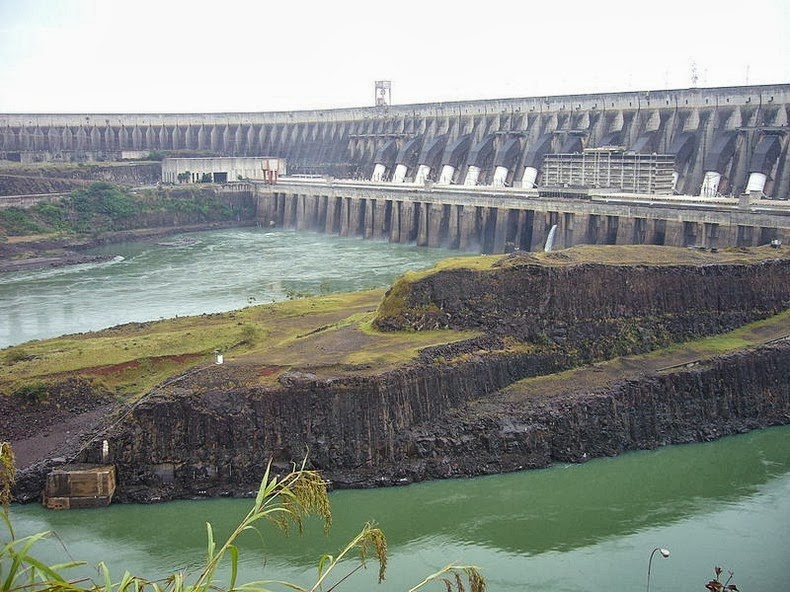

Guri Dam, Venezuela
The Guri Dam is 7,426 meters long and 162 meters high and is located in Venezuela on the Caroni River. As of 2009, the hydroelectric plant is the third-largest in the world, with 10,235 MW capacity and eighth-largest by volume of water. The Guri Dam alone supplies 73% of Venezuela's electricity.
The dam has been the source of controversy for a long time because the lake it created flooded some 4,250 square km of a forest that was renowned for its biodiversity and rare wildlife, including the only place where the recently discovered Carrizal Seedeater (a finch-like tanager) was ever found.